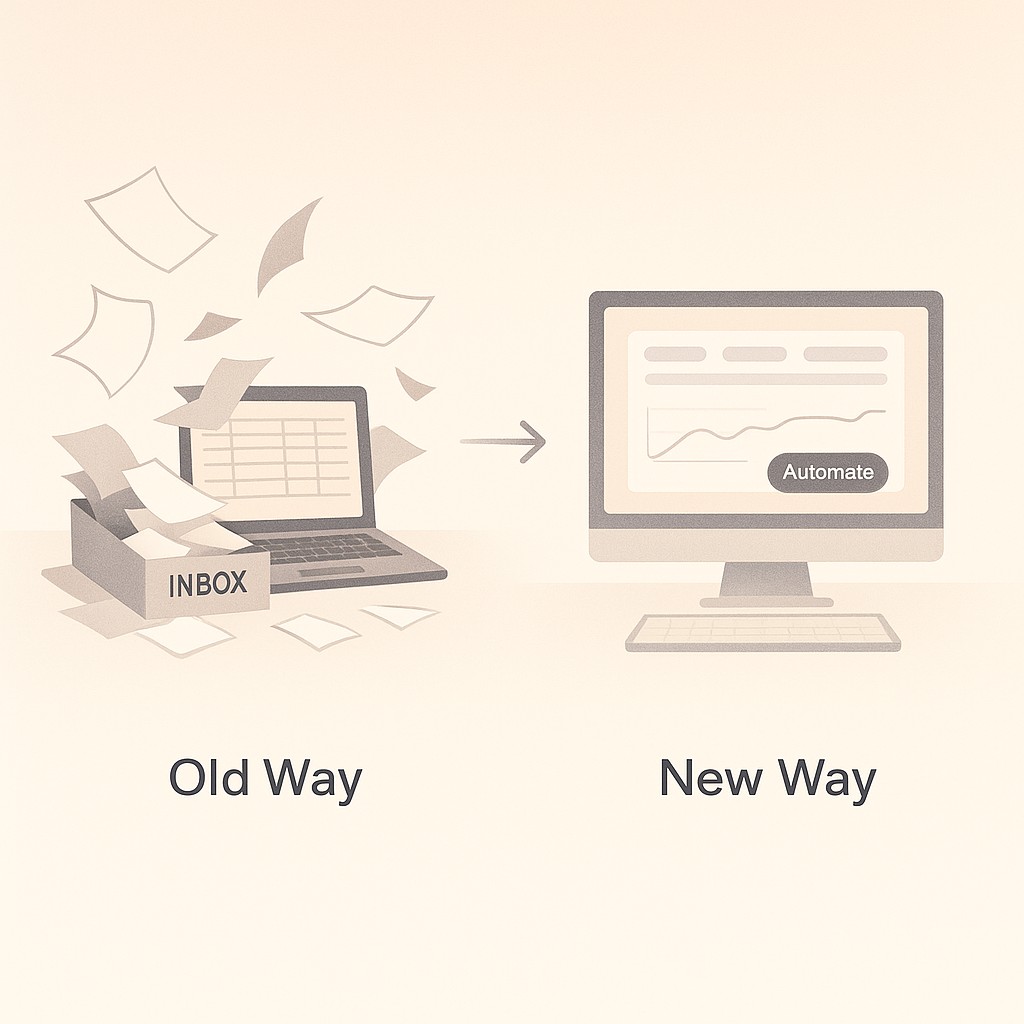When the Room Goes Quiet: Storytelling for Technical Demos
When the Room Goes Quiet: Storytelling for Technical Demos

When the Room Goes Quiet
Two minutes into the live dashboard demo and I could feel the energy. We had real-time charts moving. Even a few raised eyebrows. At one point, someone actually whispered, “Whoa.”
But ten minutes later, half the room was checking email. The questions faded. The dashboard was still running, but the excitement had drained out of the air.
Then someone finally asked, barely above a murmur, “Wait—what’s the point of this again?” And just like that, the demo stalled.
That was on me. I realized I was proving the build instead of guiding the room. I had shown the solution. I’d proven it worked. But I skipped storytelling for technical demos—and lost the room in the process. I wasn’t connecting to what anyone actually needed to see or feel. Just features, floating.
Here’s the lesson. Your work isn’t valuable if no one understands it. That’s where we start.
Why Features-First Demos Fall Flat
It’s tempting to kick off a demo right at the code, showing the clever parts, the tricky integrations, the features that took real engineering sweat. But here’s where momentum dies. When your tour begins with what you built instead of what your audience actually cares about.
It’s easy to forget how much our expertise hides context, and that usually means we assume too much—classic curse of knowledge onlinelibrary.wiley.com/doi/10.1111/test.12320. If you’re like me, you’ve watched eyes glaze as you click through tabs, telling yourself, “This is self-explanatory,” when it’s not. Start where your audience lives, not where your code lives.
Here’s the pivot that matters. A great demo isn’t a walkthrough—it’s technical demo storytelling. It’s a transformation story, with you as the guide. Features and functions don’t sell a solution—value, benefits, and measurable outcomes do. If what you’re showing doesn’t lead the audience from a pain point to a tangible result, they’ll check out—whether or not your tech is brilliant.
I get the worry. I used to think focusing on stories would dumb down our work or underplay the hard problems we’d solved. Sometimes I’d convince myself stakeholders just wanted fast feature dumps, or that making time for a narrative would mean hand-waving complexity. But the more I practiced, the more I realized stories clarify without simplifying. They anchor the technical details in real-world stakes and show why the hard parts matter. I worried that telling a story would trivialize hard engineering work until I saw it do the opposite.
The good news. You don’t need to storyboard for days. There’s a framework you can use on your very next demo—dangerously practical, and it fits inside a sprint.
Storytelling for Technical Demos: How to Frame Any Demo as a Transformation Story
Here’s where you start. Picture the actual friction your audience wrangles day after day. It’s not just bugs in the backlog, it’s late-night support tickets, decisions bogged down in endless email threads, and hours stolen from work that actually matters. Every slowdown costs them momentum. Every confusing manual step chews up time that should be spent building, solving, shipping. If you’ve ever watched a team lose a week to just “figuring things out,” you know this feeling. That lost energy is what you’re here to give back.
Now, take a breath and lay out the old way. The current workaround—their everyday reality—means poring over mismatched spreadsheets, flipping back and forth through internal tools, or sending one more “Can you resend that?” Slack. And not saying anything for a moment? That lets the real pain land. Let that silence hang. Before you show the fix, let them see what it’s actually costing.

Then—all at once—show exactly what changes. One clear move. Don’t open every tab or click every button. Focus on how your engineering work dissolves that friction. For example, your new API triggers a live update in a dashboard. One click, and support tickets auto-triage. Suddenly, the manual grind vanishes. Keep your demo simple and visual. The audience needs to hold the outcome in their heads.
Here’s what I keep reminding myself—in practice, when information is presented simply, people can keep more than five items in mind. But if things get complex, that drops to fewer than two (nature.com/articles/s41539-024-00279-x). Resist the urge to show every feature. One decisive action is worth ten minor ones when you’re trying to make a change stick.
I’ll admit, running a demo without context feels a little like being on a cooking show where you rattle off ingredients—“There’s the flour, there’s the salt, there’s the yeast”—but nobody says what dish you’re actually making. You build confusion, not clarity. Make sure the audience knows what you’re cooking, and why.
In outcome-focused demos, paint the impact in numbers. Instead of “support volume is lower,” say, “We’ve cut the ticket response time by 40%.” Show when this actually shifts. “You’ll see these results in the next sprint, not six months from now.” That’s the kind of recalibration that turns curiosity into real motivation. When you anchor the change to a clock and a metric the room cares about, it lands.
So, end on a single next step. Keep clear momentum. “If you’re ready, we’ll roll this out in the next sprint. You’ll see these changes right away.” Or point to the next piece in the Storytelling for Engineers series, where you walk them through adoption, not just solution. Keep it actionable, so that story doesn’t just fade—they walk out knowing exactly what happens next.
Demo Patterns You Can Actually Use
Let’s make this simple. You want to walk in with story-driven demos that showcase real engineering work, and have it land with teams who speak product, operations, or finance. I promised patterns that cut through friction—here are three you can actually steal, each framing technical progress as transformation.
Start with this. Dashboards. Stakeholders are stuck chasing status every week. Emailing for “the latest” reports. Waiting for someone to export and clean up data before a decision can even be made. The old way looks like sitting at your desk while a dashboard lags—sometimes ten seconds to load, then two more to refresh, all while the meeting drags on. When you demo, anchor in that pain. Show the new dashboard firing off in real time, loading status in seconds. Quantify the shift. “Status updates are now instantaneous—no more waiting, no more distractions.” Then say, “Let’s put this version in your hands for a week and see how many syncs it actually obsoletes.” Give the room something to act on.
Here’s a weird thing I noticed in one session. Our shiny new dashboard loaded in just two seconds, which was honestly amazing compared to the ancient system. But I still found myself apologizing for that tiny delay. Two seconds! Why do we always feel like we owe an explanation for anything that isn’t instant? Maybe we’re so wired to chase perfection that we forget what normalcy feels like for everyone else. Anyway, the room barely noticed—and just kept asking about the numbers.
Now let’s talk ML and AI. The pain here isn’t theoretical—it’s the costly ticket backlog that keeps piling up, each support request slogging through a manual triage loop. Before, the team scanned live data, tried to assign tickets by hand, and watched priorities get buried. So you frame the demo by showing what that old cycle steals from them. Then drop the new model. Automatic prioritization routes each case, top issues flagged instantly, the rest distributed for faster resolution.
I say it out loud. “We cut average ticket resolution from two days to six hours—because the model does the sorting, not you.” Give them the numbers. “Last month, that meant 112 tickets closed without overtime.” I always end with, “Let’s pilot this with the next batch of support data.” It’s not theoretical—stakeholders see their own chaos settle for the first time.
For pipelines, most onboarding flows start with delays, manual checks that eat up an engineer’s time, and endless back-and-forth when data is missing or broken. You walk in, call out the wasted hours. “How many times do new users stall because their info doesn’t pass the first check?” Demos here lay out that pain and contrast it with the new path. Automated data validation that flags failures fast, surfaces exactly where the breakdown happened, and lets users fix issues on the spot. You quantify savings. “Onboarding now finishes in minutes, not days.” Rollout proposal lands like this. “If we enable this across teams, project launches accelerate—and you see less rework, more build time.”
This isn’t just for tech leads and engineers. You frame the same beats as technical demos for stakeholders—PMs (“status unblocked”), customer success (“ticket closure you can measure”), finance (“time saved equals cost cut”), and ops (“error handling you can trust”)—so every person hears their metric and sees their role in making the change happen. Whatever your audience, tie each demo moment to the outcome they’ll care about—that’s how the value sticks.
Your Checklist and Your Pushback
Let’s talk about what usually gets in the way. Most of us—myself included—have worried that stakeholders only want a bullet list of features, or that there’s no time to build a story around the demo. But here’s what’s changed everything for me. A concise narrative actually compresses all your engineering complexity into something people remember. What gets lost in feature dumps is what sticks when you frame the transformation. Direct story beats cut through distraction and drive retention, and framing cuts down the back-and-forth that usually turns demos into repeat explanations. I’ll admit, I used to rush through the tour. Now I’d rather take two minutes to set context so the value lands for good.
Here’s how you plan the next run. These are the five beats you need for storytelling for technical demos. Start with a pain point your audience feels. Name the old way. Show how your solution changes their daily flow. Quantify one core metric (pick the single stat that’s going to resonate). Pause after impact so the room can react. End with one clear action you’ll propose. If it helps, skim back to the section above—every example hits these notes.
Pick your next forum—sprint review, product sync, or team standup. Script those beats ahead as a demo narrative structure: write the pain, the old way, the shift, the number, the ask. If you want deeper reps, share this checklist with your team or grab a spot in an async demo channel to practice and get feedback. The more you work this pattern, the more it becomes automatic. Tomorrow, block ten minutes to prep. Not to perfect the details, but to clarify your story.
Turn your demo story beats into clear scripts, emails, and slides in minutes, using our AI to generate content tailored to your team’s goals, constraints, and voice.
This is the shift. Don’t just show what you built—connect what you built to why it matters. The result is obvious value, absorbed quickly, and put into action. That’s how your demo turns into their decision.
And sometimes, even after you do everything right, there’s still that one person who asks for “just one more feature” halfway through. I’m still not sure how to avoid that completely. Maybe that’s what keeps the demo interesting.
Enjoyed this post? For more insights on engineering leadership, mindful productivity, and navigating the modern workday, follow me on LinkedIn to stay inspired and join the conversation.
You can also view and comment on the original post here .
